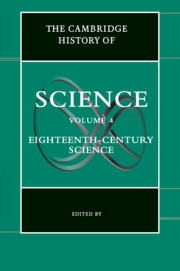31 - Spanish America: From Baroque to Modern Colonial Science
from Part IV - Non-Western Traditions
Published online by Cambridge University Press: 28 March 2008
Summary
Formal systems of “non-Western science” created by the Aztec, Maya, and Inca seemed to have evaporated into thin air in the wake of the Spanish conquest. The collapse of large indigenous polities and the disappearance of courts capable of sustaining elite knowledge appear to be the cause. Nancy Farriss has argued that the Maya in Yucatan lost the institutions that had kindled their taste for large cosmic riddles. Although the Maya elites did not disappear – and actually became important brokers in the operation of colonial labor systems – they lost interest in those theological and cosmological questions that had driven the astronomical and calendrical investigations of classic and postclassic Maya civilizations. As the Maya elites were left in charge of ever more simplified polities, their interest became narrowly parochial. Under Spanish colonial rule the former complex social structures of the Inca, Maya, and Aztecs gave way to simplified communities lacking all intermediate social tiers: gone were the indigenous pan-regional polities of the past whose courts had maintained large retinues of priests, scribes, and scholars – producers of elite precolonial non-Western knowledge. The new simplified native elite class embraced Catholic images, shrines, temples, and rituals, and those few religious leaders who kept native religions (and thus non-Western scientific traditions) alive went underground, losing the source of much of their prestige, which lay in maintaining communal cohesion through public sumptuous worship. By the eighteenth century indigenous systems of knowledge had transmuted into hybrid forms of folk Catholicism and had moved to the margins of Latin American societies.
- Type
- Chapter
- Information
- The Cambridge History of Science , pp. 718 - 738Publisher: Cambridge University PressPrint publication year: 2003
References
- 5
- Cited by

